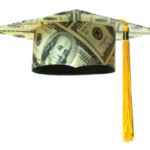 Back when dinosaurs roamed the earth, I bought a fat paperback test prep book to help me study for the SAT (which, back then, was still known as the Scholarship Aptitude Test). I didn’t buy the book until after I’d already taking the SAT the first time. After studying, I took the test again–and did worse.
Back when dinosaurs roamed the earth, I bought a fat paperback test prep book to help me study for the SAT (which, back then, was still known as the Scholarship Aptitude Test). I didn’t buy the book until after I’d already taking the SAT the first time. After studying, I took the test again–and did worse.
Not that I suffered for this experiment. I scored high enough to become a National Merit Scholar, which meant big bucks for college.
I recently asked a friend my age who was also a National Merit Scholar how he prepared for the test. He vaguely remembered being taught a few test-taking strategies in school. But that’s it.
The world’s changed in the past few decades. College is a lot more expensive and elite schools are a lot more competitive. High scores give kids an edge not just for admission but for all-important merit scholarships. Which is why SAT test prep is pretty much a given among upper-income parents. Even less affluent parents are spending hundreds or even thousands of dollars trying to boost their kids’ scores, as I write in my Reuters column this week, “Resist the urge to go overboard with test prep.” Not investing in test prep feels like a gamble that could leave your kid trampled in the dust.
These parents aren’t foolish or deluded. Scores matter, and most teenagers could use some help. My column mentions some free resources, and I highly recommend reading Debbie Stier’s book, “The Perfect Score Project: Uncovering the Secrets of the SAT.” Even if you can’t afford private tutors, you can do a lot to help your get your child ready for the test.



